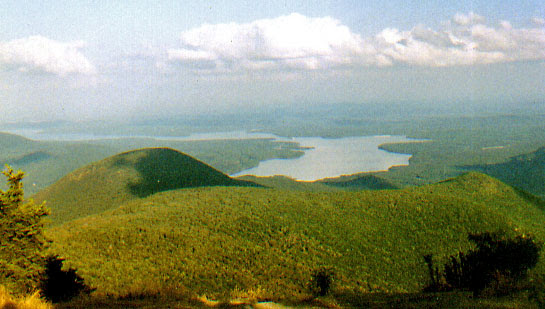DEP Watershed Regulations
In an attempt to avoid spending billions of dollars on a filtration plant, New York City’s Department of Environmental Protection issued stricter regulations on upstate communities in 1990. However, the city did not consult with Catskill residents, so the release of the new regulations prompted serious backlash. State Assemblyman Richard Coombe of Grahamsville said, “We cannot afford to let New York City buy more of our land and increase its control over the watershed without considering the economic impact these actions will have on our communities.” During this time, many different businesses and committees met to discuss how to push back against the regulations. In particular, farmers in the region argued that prohibiting farm activity within 100 feet of water would put them out of business. The Catskill residents put together the Coalition of Watershed Towns and hired a law firm. After several years of negotiations and heightened animosity, the two regions came to an agreement in 1995, in part thanks to new NYC DEP Commissioner, Marilyn Gelber, who frequently traveled upstate to listen to local representatives.

Funded by the Catskill Watershed Corporation in partnership with the NYC Department of Environmental Protection
History of the Watershed Agricultural Council
The Watershed Agricultural Council (also known as “WAC”) works with farm and forest landowners in the New York City Watershed region to protect water quality on behalf of nine million New York residents. The Council uses Whole Farms Plans, Forest Management Plans, and Conservation Easements to help farmers, forest professionals and private landholders address water pollution concerns on properties located in the Croton and Catskill/Delaware Watersheds.
1986 Federal Safe Drinking Water Act: Filtration required for surface drinking water supplies
1990 NYC DEP Proposes Watershed Regulations
1991 Collaboration: “Brown Book” Establishes Program Guidelines
1992 10 Pilot Farms Started: Phase I Begins
1993 Incorporation of WAC: EPA grants NYC a Waiver of filtration
1994 Implementation: Phase II Begins
1996 Foresters Log On, Economic Viability and Outreach Programs Started
1997 NYC Memorandum of Agreement: Filtration FAD Goals Restructured
1998 Agricultural Conservation Easement Program Started
— From the WAC website. Link.
Overview of the Safe Drinking Water Act
“The Safe Drinking Water Act (SDWA) was originally passed by Congress in 1974 to protect public health by regulating the nation’s public drinking water supply. The law was amended in 1986 and 1996 and requires many actions to protect drinking water and its sources—rivers, lakes, reservoirs, springs, and ground water wells. (SDWA does not regulate private wells which serve fewer than 25 individuals.) SDWA authorizes the United States Environmental Protection Agency (US EPA) to set national health-based standards for drinking water to protect against both naturally-occurring and man-made contaminants that may be found in drinking water. US EPA, states, and water systems then work together to make sure that these standards are met.”
—Source: US Environmental Protection Agency. Link.
The Surface Water Treatment Rules
“The purpose of the Surface Water Treatment Rules (SWTRs) is to reduce illnesses caused by pathogens in drinking water. The disease-causing pathogens include Legionella, Giardia lamblia, and Cryptosporidium. The SWTRs requires water systems to filter and disinfect surface water sources. Some water systems are allowed to use disinfection only for surface water sources that meet criteria for water quality and watershed protection.The following is a brief overview of the major components of each rule. This combination of rules is designed to provide protection from microbial pathogens. Simultaneously, the rules minimize health risks to the population from disinfection byproducts.”
— Source: US Environmental Protection Agency. Link.
Surface Water Treatment Rule (SWTR) – June 1989
- Applies to all public water systems (PWSs) using surface water sources or ground water sources under the direct influence of surface water (GWUDI)
- Requires most water systems to filter and disinfect water from surface water sources or GWUDI
- Establishes maximum contaminant level goals (MCLGs) for viruses, bacteria and Giardia lamblia
- Includes treatment technique (TT) requirements for filtered and unfiltered systems to protect against adverse health effects of exposure to pathogens
— from EPA website
The Surface Water Treatment Rule required municipalities with surface water systems to build a water treatment plant.
Fred Huneke, a past Chairman of the Watershed Agricultural Council’s Council of Directors, estimated the cost of such a filtration plant for New York City in 1990 dollars at $5-7 billion with a yearly operational cost of $500 million.


